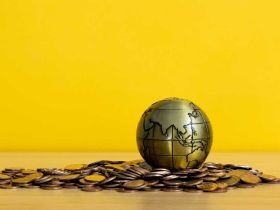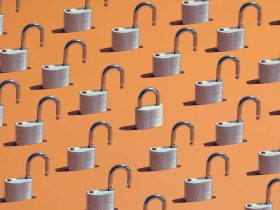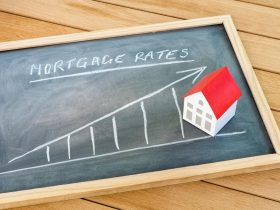Follow professional economists on social media and you’ll see many who are confused. They don’t understand why consumers are so in the dumps, so low in confidence. “The economy is strong,” they say. “Things are getting better. We’re winning.”
Yes, GDP was on 4.9% annualized growth in the third quarter. The job market is strong. Mike Koncal, director of macroeconomic analysis at the left-leaning Roosevelt Institute, posted a graph Wednesday on Twitter. It showed that real GDP has come back to where it presumably would have been if the pandemic hadn’t happened. So, we’re all fine.
But the question always comes back to who “we” are. Economists live in a more rarefied air than most people, with higher education, higher incomes, higher social standing. GDP is 68%. Here’s what consumer confidence looks like, using an annualized version of the University of Michigan consumer confidence numbers.
It’s in an annual summation and shows that consumers are far from happy or confident. And, as important, the fall wasn’t some immediate reaction to pandemic-related shocks. It is in 2018 that consumer confidence started to turn. Five years of worry and concern. But, in an economic framework, why? Because most people, as measured by median earnings, have been seeing their ability to manage and live eroded away, again longer than economists have thought.
To see this, it’s necessary to understand seasonally adjusted data. Economists want to see trends, understandably. But real data, how things actually happen, becomes too complex and ill-mannered to understand. And so, economists alter the data, smoothing out volatility and unpredictability to understand the basic trends that might be at play.
But, by definition, seasonally adjusted data doesn’t resemble the vagaries of reality. Economists change the numbers in front of them in pursuit of pure trends that may be buried in data. Unfortunately, those shifts can have big impact.
Take a look at a first series of data in the form of seasonally adjusted real disposable personal income — the money people have left to spend after taxes.
Not only is the data adjusted, but it is a calculation of al disposable income on an annual basis. The peak comes in 2021, presumably with inflation having its biggest impact.
Now, instead, look at a different view of disposable income. Not only is the data not seasonally adjusted, so you can see what has been happening as it occurred, but it focuses on median income, the experience of the people in the middle. Here’s the graph.
For the great unwashed, the turning point comes in 2019, a couple of years before. In other words, incomes have been falling in real terms for most of the country for years.
Now, combine this with real growth in consumer spending. The month-to-month numbers out of the Census Bureau don’t consider changes in prices, and even as inflation slows, it is still positive and there haven’t been rollbacks in pricing.
The people who have to experience economics as it happens, rather than indulge in the luxury of seasonally adjusted numbers, and who are not insulated from events through financial resources, have seen their real income decrease since before the pandemic even arrived, even as prices grew significantly higher. If that isn’t a good reason to lose confidence in the economy, what is?
Read the full article here













Leave a Reply